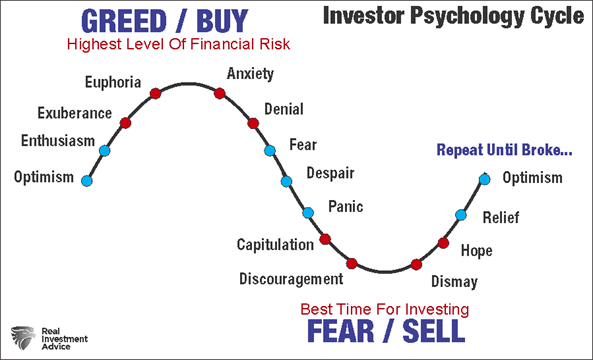January 2024 Update
Ashley Nichols - Jan 11, 2024
It's a new year and we have some lovely returns to share! Stephen shares his monthly technical comments and the trades we made in December - and Ashley writes about how the power of de-influencing can benefit our bank accounts!

Money is a tool. It's something that supports your life!
The 2024 TFSA limit has been increase to $7000. Please give us a call to make your contribution.
Our Portfolio
*Hopefully everyone has a chance to listen to our podcasts*
Transactions
December was a strong month in the markets. Our large position in the TLT ( 20 year treasury notes) worked out very well. We bought the position around $84 at the end of October and sold it at the end of December around $99. Eighteen percent return in one month on a bond trade. We also took profits on our uranium trade, our S&P 500 trade and many others, why, because the market became extremely extended at the end of the year ( 9 consecutive up weeks in a row) and we are looking at adding positions on a pull back in the new year.
As of January 2, 2024, we are currently around 56% cash, 19% in bonds and 25% in equity.
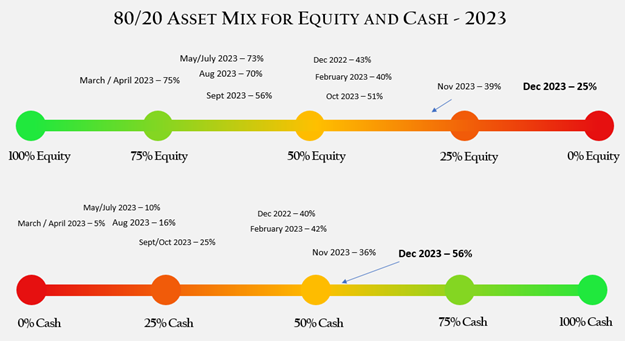
Returns on our 60/40, 70/30, and 80/20 portfolios before fees:
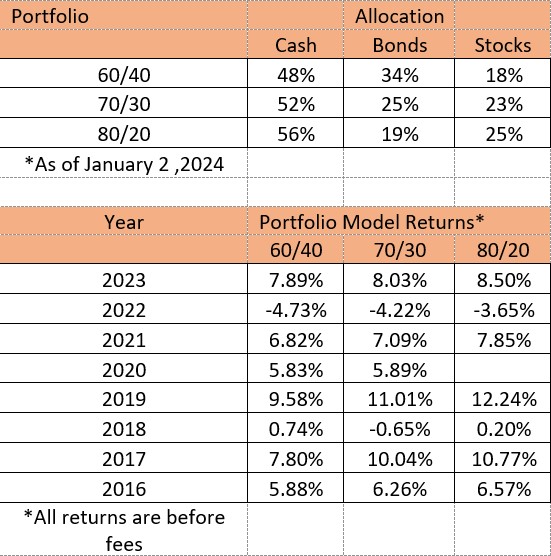
Interesting Charts
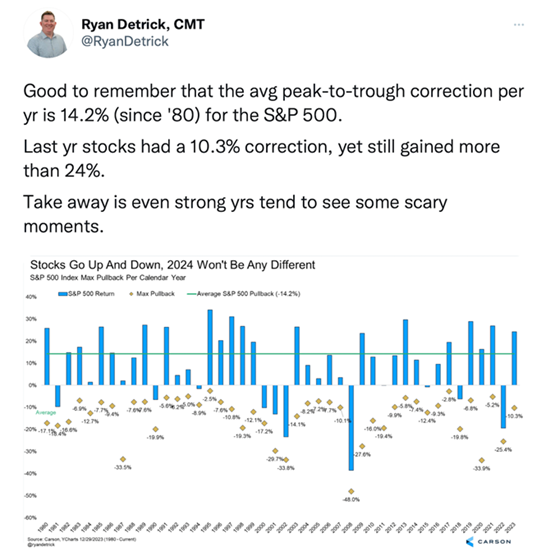
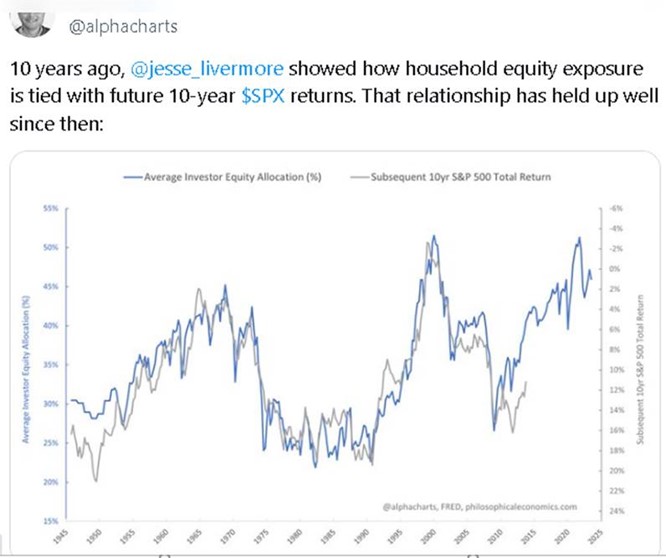
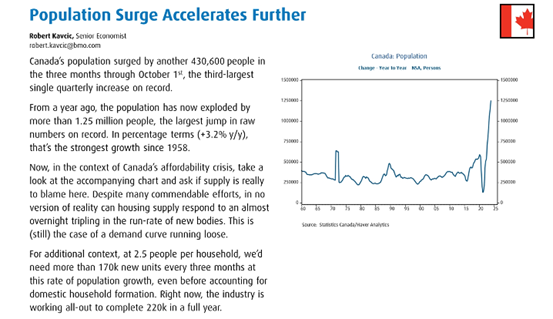
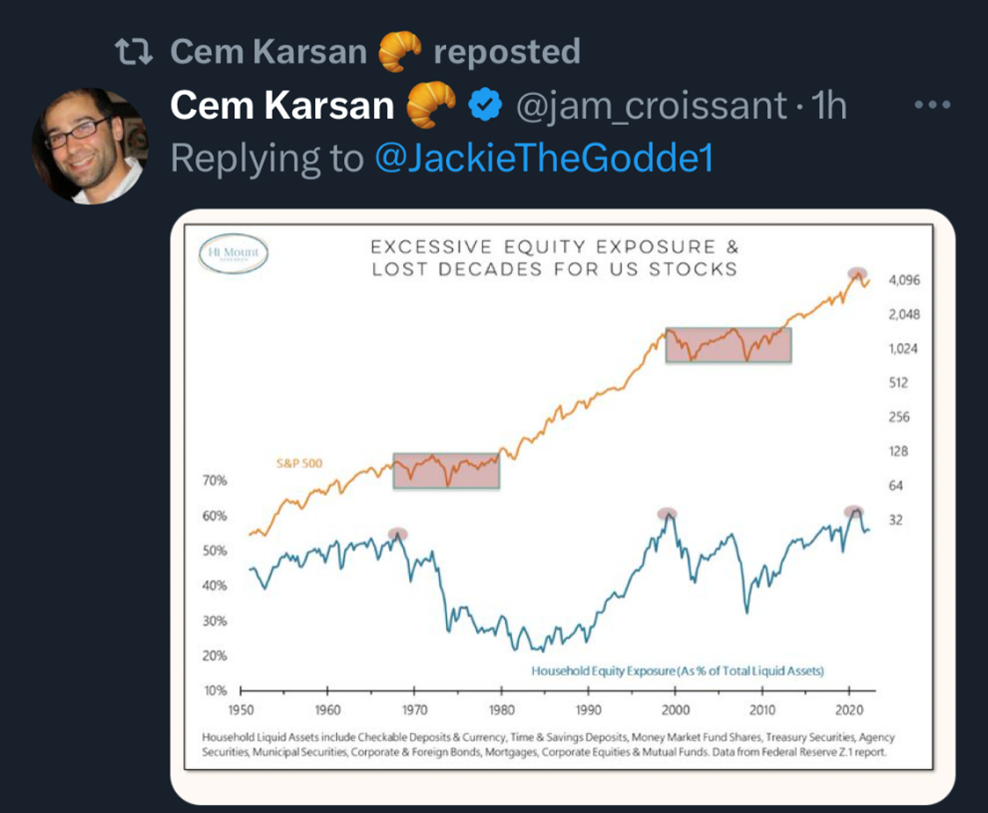
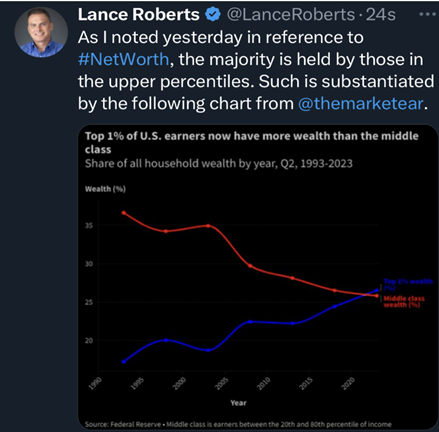
Technical Comment
https://www.brookstradingcourse.com/price-action-trading-blog/
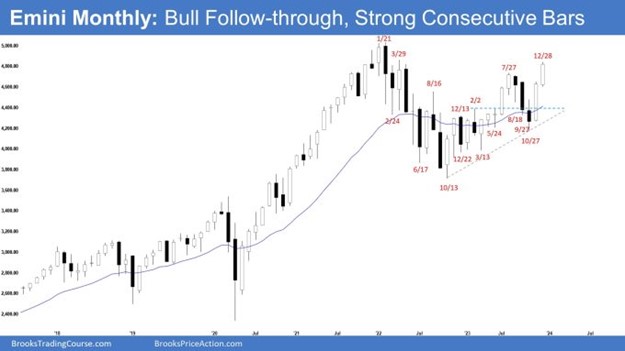
-
The December monthly S&P500 was a consecutive bull bar closing near its high and above the July 27 high.
-
Last month, we said that the bull trend remains intact. If the bulls get a follow-through bull bar closing above the July 27 high, it will increase the odds of a retest of the all-time high.
-
The bears see the current rally as a retest of the March 2022 all-time high and want a reversal from a lower high major trend reversal or a double top.
-
They also see a large wedge pattern (Dec 2, July 27, and Dec 28).
-
They want a larger second leg down (with the first leg being Jan 2022 to October 2022 selloff) and a retest of the October 2022 low.
-
Because of the strong rally in November and December, they will need a strong signal bar or a micro double top before traders would be willing to sell more aggressively.
-
Previously, the bulls managed to create a tight bull channel from March to July.
-
That increases the odds of at least a small second leg sideways to up after the July to October pullback. The second leg up is currently underway.
-
They hope that the current rally will lead to a multi-month rally, like the rally from November 2020.
-
Since December closed above the July 27 high, the bulls will need to create a follow-through bull bar in January to increase the odds of a breakout above the all-time high.
-
They hope to get a gap up on the Yearly, Monthly, Weekly and Daily charts when trading resumes next week. Small gaps usually close early.
-
December is a bull bar closing near its high, so it is a buy signal bar for January.
-
For now, odds slightly favor January to trade at least a little higher. The all-time high is close enough and could be tested in January.
-
The bull trend remains intact (higher highs, higher lows).
Why We Continue To Repeat Our Mistakes
Every year, Dalbar Research publishes an extensive study that repeatedly shows three primary reasons for investor failure.
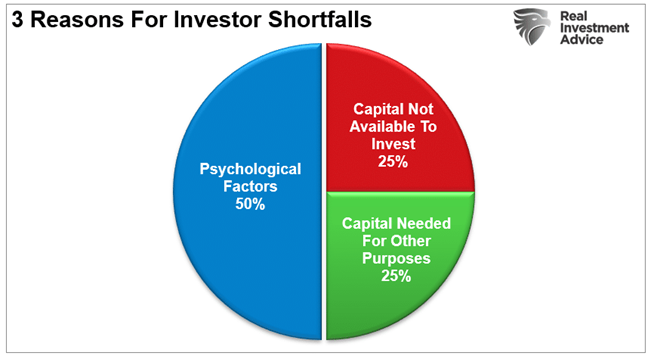
The key issues are a lack of capital to invest and psychology. Dalbar defined nine of the irrational investment behavioral biases specifically:
-
Loss Aversion – The fear of loss leads to a withdrawal of capital at the worst possible time. Also known as “panic selling.”
-
Narrow Framing – Making decisions about one part of the portfolio without considering the effects on the total.
-
Anchoring – The process of remaining focused on what happened previously and not adapting to a changing market.
-
Mental Accounting – Separating the performance of investments mentally to justify success and failure.
-
Lack of Diversification – Believing a portfolio is diversified when it is actually a highly correlated pool of assets.
-
Herding– Following what everyone else is doing. Such leads to “buy high/sell low.”
-
Regret – Not performing a necessary action due to the regret of a previous failure.
-
Media Response – The media is biased toward optimism to sell products from advertisers and attract views/readership.
-
Optimism – Overly optimistic assumptions tend to lead to rather dramatic reversions when met with reality
.
The “herding effect” and “loss aversion” are the most significant behaviors that compound the issues of investor mistakes over time. As markets rise, individuals believe the current price trend will continue indefinitely. The longer the rising trend lasts, the more ingrained the belief becomes. Eventually, the last of the “holdouts” finally “buy in” as the market evolves into a “euphoric state.”
The cycle then repeats itself.
